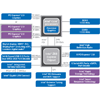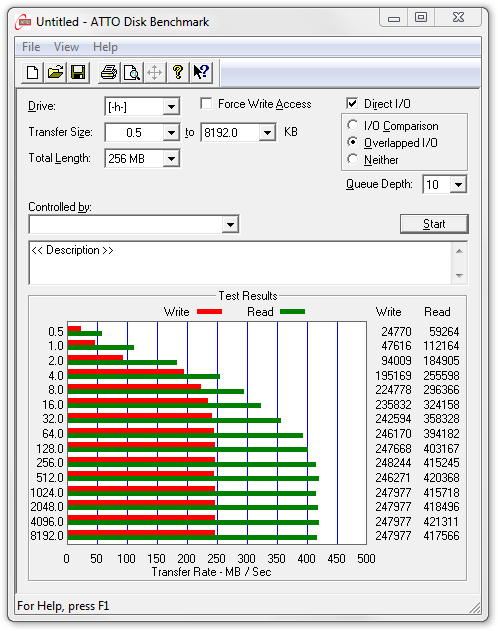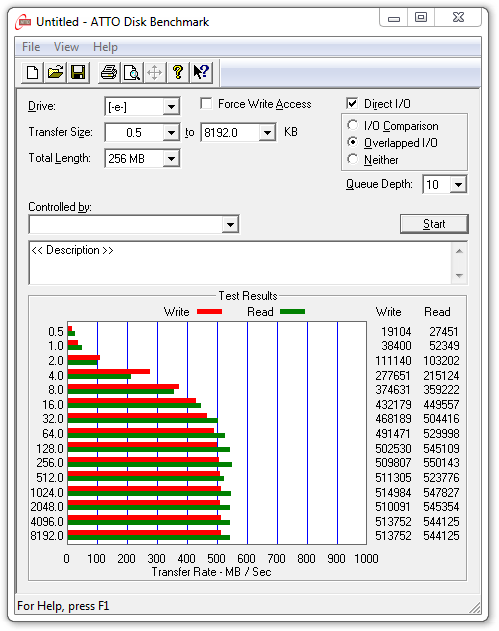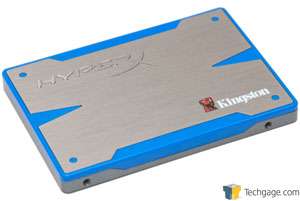- Qualcomm Launches Snapdragon 4 Gen 2 Mobile Platform
- AMD Launches Ryzen PRO 7000 Series Mobile & Desktop Platform
- Intel Launches Sleek Single-Slot Arc Pro A60 Workstation Graphics Card
- NVIDIA Announces Latest Ada Lovelace Additions: GeForce RTX 4060 Ti & RTX 4060
- Maxon Redshift With AMD Radeon GPU Rendering Support Now Available
Battle of the SATA 3.0 Controllers

With newer SSDs now coming well within 10% of maxing out a SATA 3.0 port, it’s important to make sure that your motherboard is properly equipped to handle such drives if planning to buy one. In our testing, while AMD’s and Intel’s solutions offered superb performance, Marvell’s leaved a bit (or a lot) to be desired.
Page 1 – Introduction
In the early days of any new technology that requires motherboard vendors to seek out the best chipsets or components for their customers, the selection is usually lacking. Most recently, NEC was the only company offering chipsets for USB 3.0, and likewise, Marvell had exclusive SATA 3.0 support with its 9128 chipset.
The lacking competition at any launch can make things easier on motherboard vendors given there’s generally no other choice, but for consumers, the early adoption can also mean receiving a product that’s not quite up to the standards we’d hope to see.
A perfect example of this, and the overall theme of this article has to do with lacking SATA 3.0 performance on Marvell controllers. This isn’t an article designed to tear apart the company’s offerings, and for most people, there will be no problem – especially for hard drive users. But for those with super-fast SATA 3.0 SSDs, the best performance will be seen on a non-Marvell controller.
While I was aware of certain SATA 3.0 performance issues in its earlier days, it’s not something I read into too deeply, especially since no SSD existed at the time to push through the 2.0 barrier that effectively. Since then, I thought nothing more of the issue, especially given chipset revisions and the fact that AMD and Intel released top-quality offerings that negated the issue to some degree.
The problem became more clear to me a couple of weeks ago, though, after receiving a super-fast SSD from Kingston. This HyperX offering is rated at 555MB/s read and 510MB/s write, so in all regards it’s the perfect sort of candidate for stressing a SATA 3.0 chipset, and effectively separating the men from the boys.
After receiving the drive, I planned on using it in some of our benchmarking suites in order to rid any possible bottleneck, and so I installed it into my own PC since that’s where two such suites are handled (external storage and NAS). After benchmarking, however, I was less-than-impressed with what I saw, and had effectively believed that I plugged the SSD into a SATA 2.0 port by accident.
That wasn’t the case. On my slightly-aging GIGABYTE X58A-UD5 motherboard, a Marvell 9128 chipset is employed for SATA 3.0 duties, and it’s the only option on the board since Intel’s X58 chipset doesn’t offer its own support. The results can be seen below:

With the 1MB transfer, Kingston’s drive topped out at about 416MB/s read, and 248MB/s write, which is a far stretch from the rated speeds of 555MB/s and 510MB/s, respectively. Given that ATTO is the same tool many SSD vendors use to speed rate their drives, I e-mailed Kingston to ask what the problem could be. Of course, it turned out to be the chipset.
With that in mind, I put the SSD in our AMD A75-based machine and ran the same benchmark there. The results:

It’s clear from these results that the Marvell controller in fact does suffer from performance issues, though given the speed we are seeing, hard drive users wouldn’t have to worry. In talking to a couple of motherboard vendors, one didn’t consider this to be a real issue, as most SATA 3.0 users wouldn’t be equipped with 500MB/s+ SSDs (I can agree, but the usage of these will grow over time).
After seeing the performance above, I felt inspired and decided to run an array of tests under proper testing conditions across the latest Marvell controller we could get our hands on (9172), Intel’s Z68 chipset and also AMD’s A75 chipset. The AMD motherboard used for testing was GIGABYTE’s A75-UD4H, while Sapphire’s PURE Z68 took care of both the Intel and Marvell.
On the next page, we’ll tackle the test system and give a quick explanation of how we conducted our testing. We’ll cover some important whys and whats in our conclusion.
Support our efforts! With ad revenue at an all-time low for written websites, we're relying more than ever on reader support to help us continue putting so much effort into this type of content. You can support us by becoming a Patron, or by using our Amazon shopping affiliate links listed through our articles. Thanks for your support!






